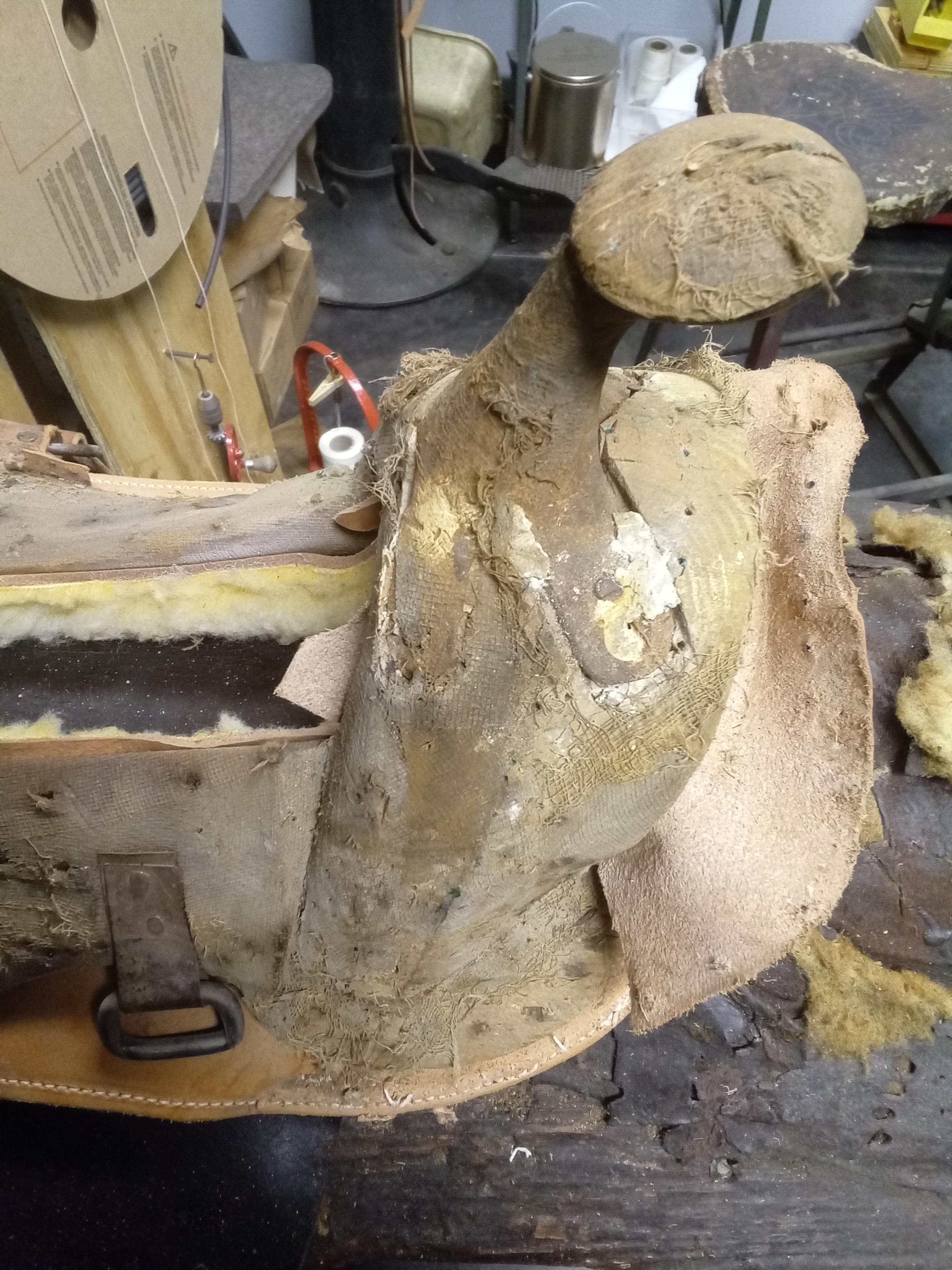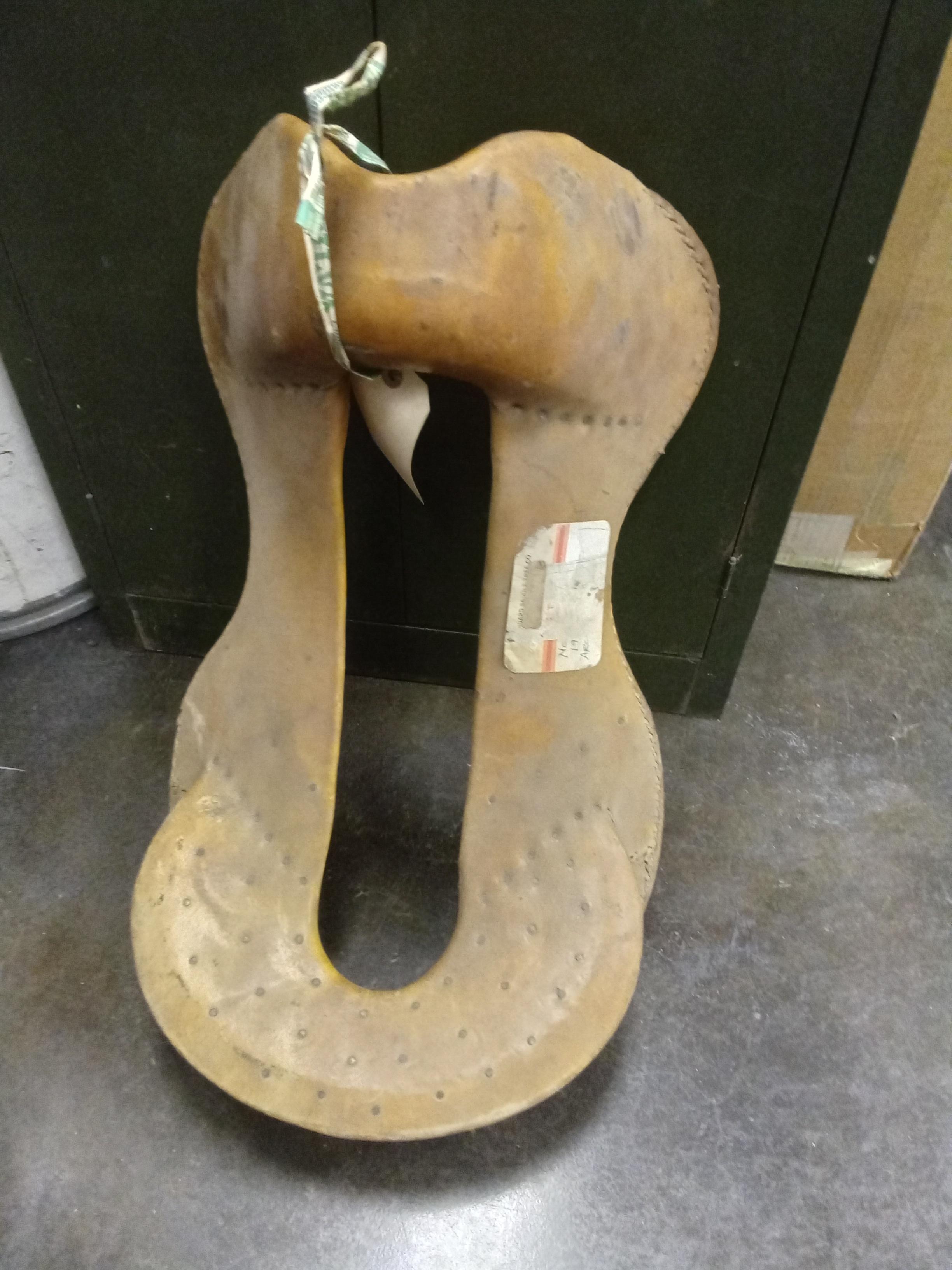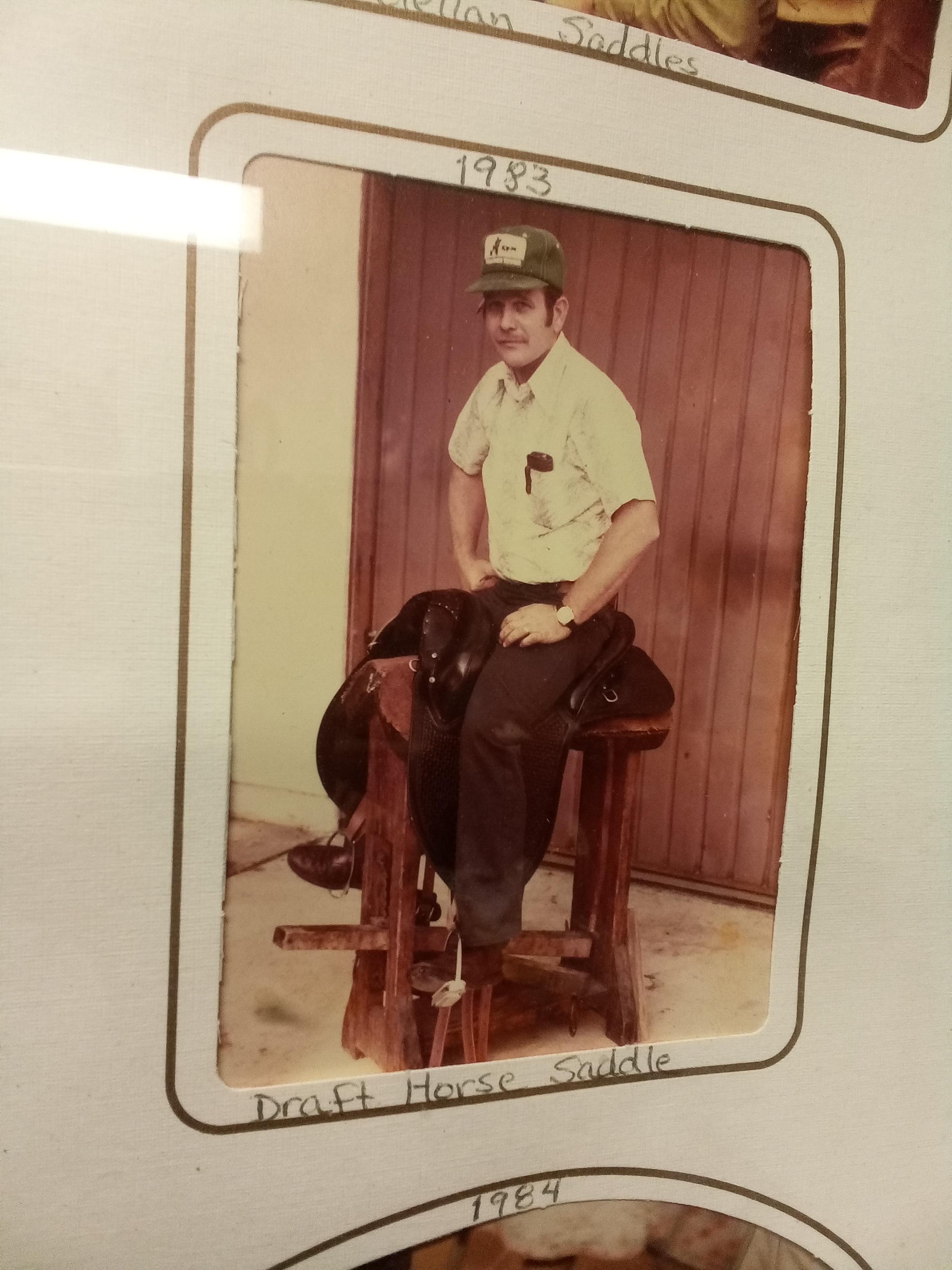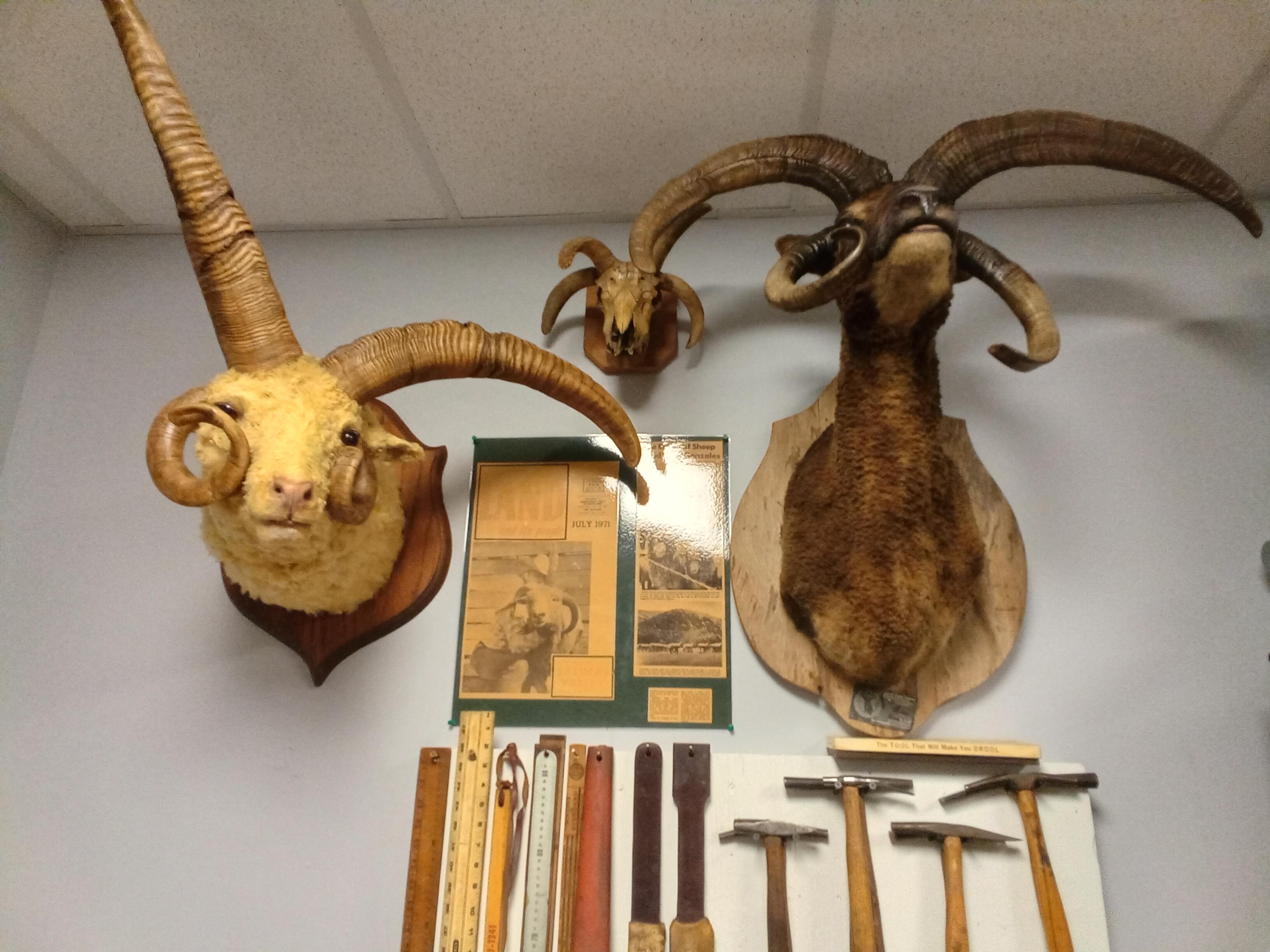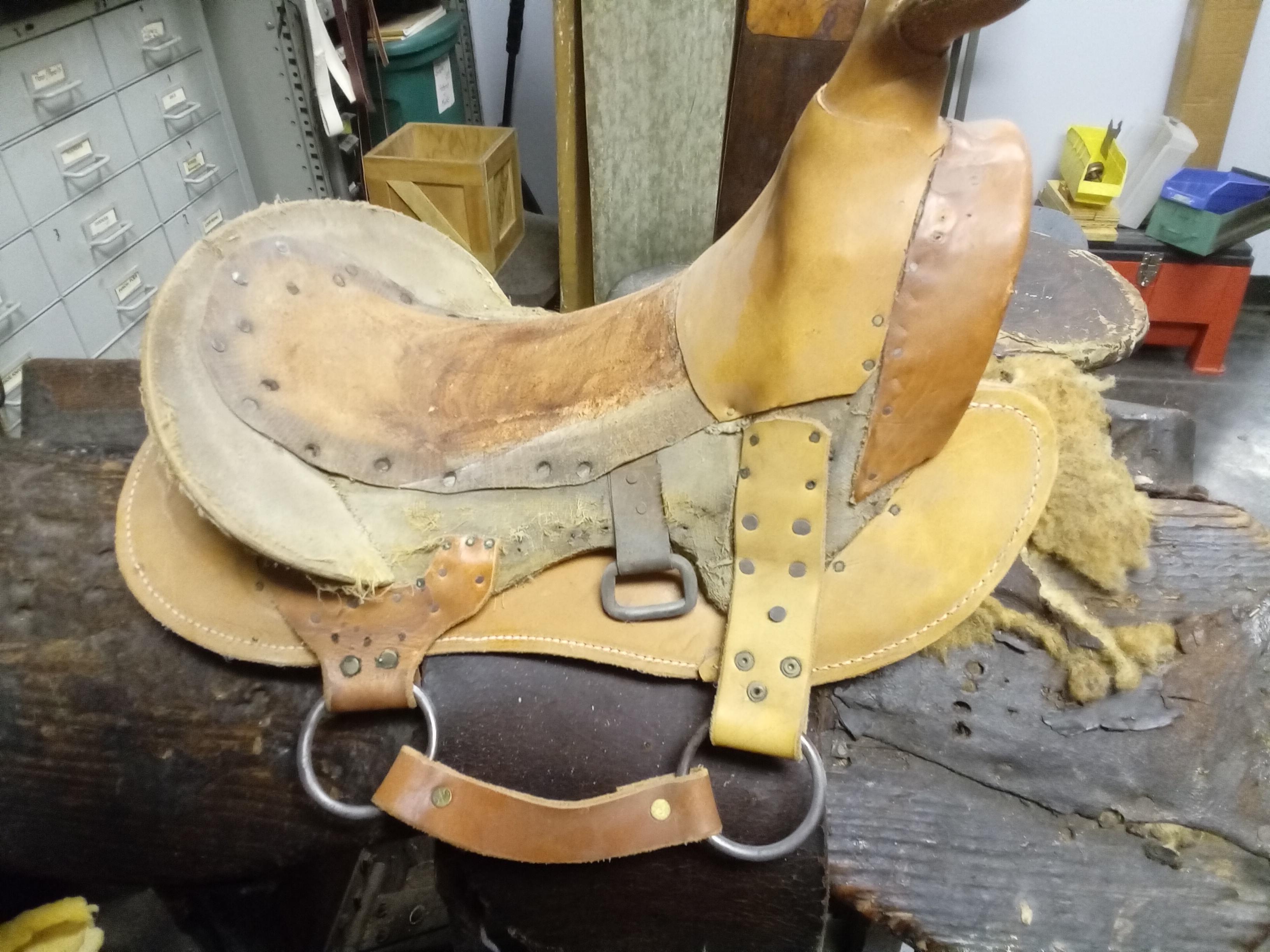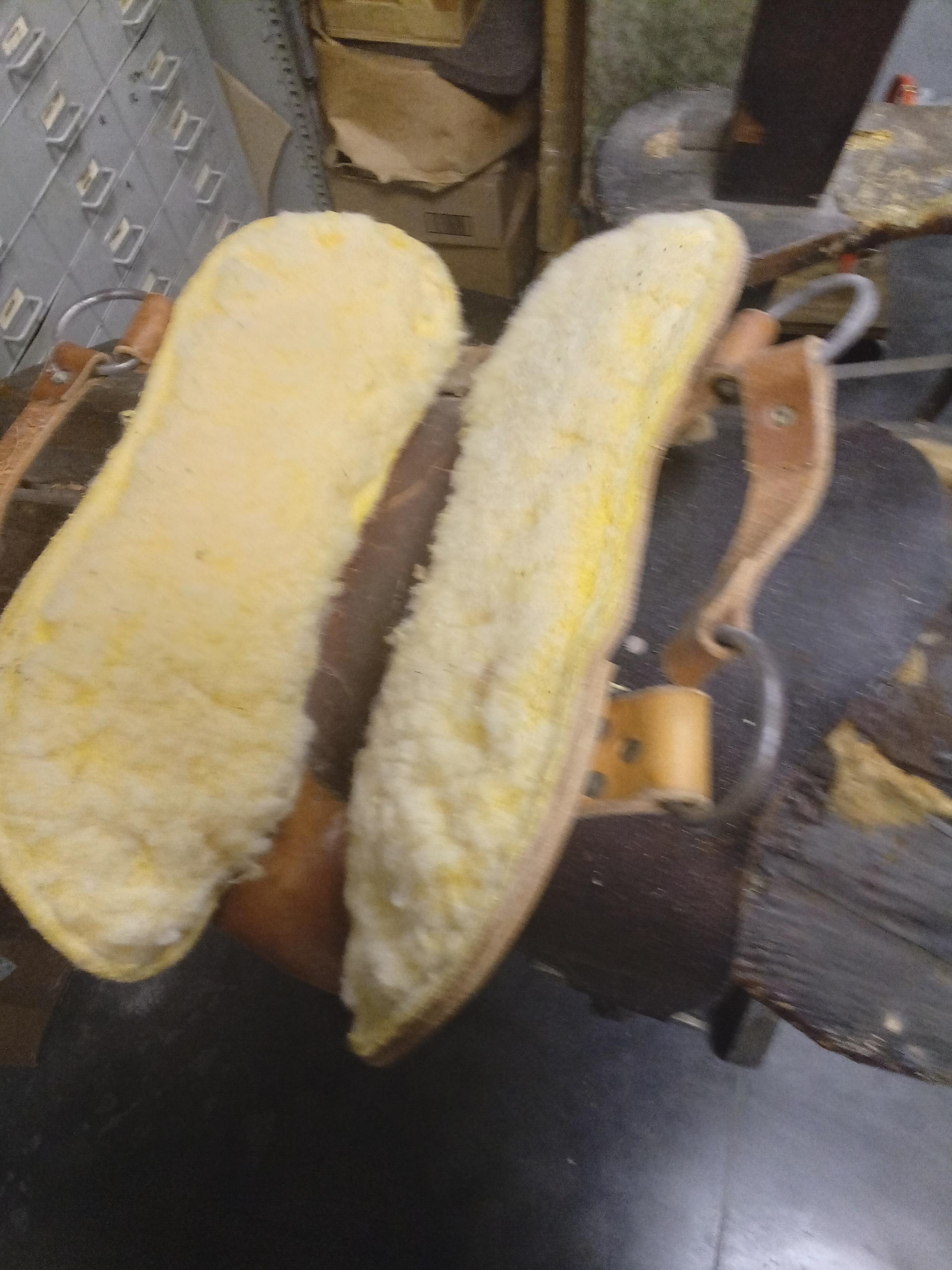-
Posts
67 -
Joined
-
Last visited
Content Type
Profiles
Forums
Events
Blogs
Gallery
Everything posted by mbnaegle
-
I agree with Cumberland above. Any working machine is better than nothing, but from a support and safety perspective, those old Model C's have major drawbacks. All clickers, regardless of if they work or have parts available to buy, are a bear to move. Their weight and tendency to tip over and cause damage when not properly moved, mean that they're not really a machine that's cheap/easy to swap out if it doesn't work for your needs, so it's something to consider when you make a purchase.
-

Albeko 83S splitting machine band knife size?
mbnaegle replied to snisson's topic in Leather Machinery
Yep, they're out of business. Scrapped a few Albeco machines in the last 20 years just cause there was no support. I think, If I'm reading my notes right, they take a 3350mm blade. I think it's actually the same as one of the Sagitta splitters (part 6.4264.37, but don't have the model written down). Not sure if it's available either. -
Anyone looking at these old "square neck" Fortuna skivers, my experience has been that they're a good basic skiver when running, but most parts are no longer available from Fortuna. They use the same blade, feet, and grind stone, some use the same feed rollers, and work plates as newer models (but many I've seen the feed roller is specific to these machines). They use leather belts that must be spliced together on the machine (can't use modern continuous belts), and most of the bearings are oddball open-face bearings that don't match modern cartridge bearings. If you need parts other than basic expendable stuff, you might find a company with old stock inventory, but I wouldn't invest much into one of these, at least not from a practical/fiscal approach. Fortuna didn't have hard set generational transitions on their machines, but IN GENERAL, I'd consider all of the old square neck Fortuna skivers obsolete, while most the newer round neck skivers are typically serviceable. The newest Fortuna skivers are white and are a whole-nother animal.
-
Some Fortuna and Italian skiver grind stones were/are hub-less, using a separate reusable nut and spacer, but some use a stone that has an epoxied aluminum hub that comes from the factory as one part. Both work fine and most of the time you can use either one on many machines (handy if you have an older skiver that someone lost the nut or spacer), and companies selling expendable skiver parts should have both, just tell them you need the stone with the aluminum center. I don't think the stone ID's are the same though and I wouldn't bother trying to glue a new stone onto an old hub. All of these wheels use the same left hand threads so they don't come apart when spinning, and most grinder spindles have a slot, hex socket, or a grip-able knurl on the bottom side of the pulley below the grinding wheel to hold it with, and you should only need to hand tighten the stone end when putting them together. If it's locked up, you might have to break the stone (you're halfway there!) and get some pliers on the hub.
-
For that style of main shaft, the brass piece is supposed to thread onto a steel sleeve inside of it. If the brass is turning but the steel isn't moving side to side, I expect the brass part is stripped. I see it has a Consew tag? I believe those skivers were made by Taking in Taiwan. I'm not sure who sells part for them. The design is very similar to old old Fortuna skivers, but I don't think the parts will interchange.
-

Sagitta Skiving Machine - Manual wanted
mbnaegle replied to AtelierStefani's topic in Leather Machinery
I've got a PDF manual for an older model (SC75) but not that one. It looks like other than the table and motor configuration, it's a typical bottom feed skiving machine that will adjust and operate same as others like Fortuna, FAV, and Atom. Here's some basics for anyone trying to dial in one of these skivers. I find that a good starting point is the blade position and sharpness. For light to medium weight leathers, you want the blade to be about a business cards width (.3mm to .4mm) away from the right side of the foot. If its under the foot or right at the edge, material will jam instead of cut. For denser heavier leathers, more gap is necessary as they don't bend up over the blade as easily, and it takes some trial and error in those case to find the right gap setting. Too much of a gap and the material will cut easily, but not accurately. Blade sharpness is always key. It's not something you can do on a time basis, or in other words, you can't just sharpen for 5 minutes and say you are done. Use the machines performance with your material or jobs to govern how often and how long you sharpen. If the cut leaves lines parallel to the blade, or burnishes as it's cutting, it's dull. It's a single bevel blade and the grind stone only hits the outer edge, so periodically you'll need to dress the inside corner with a fine stone (often sold specifically for this job) to take the burr off. Once the blade is sharp, it takes very little to maintain the edge. You might only sharpen for 30 seconds between jobs, or keep it lightly sharpening while you are using the machine. Think of every piece of leather going through it as slightly dulling the blade and your sharpening routine is trying to keep up with it. Also note that the condition of the grind stone is important. It needs to be dressed frequently based on it's performance, using a grind stone dressing wheel or carborundum stick. If you see a shiny metal build up around the stone, dress it. If you see a spray of sparks but no sparks are going around the stone, dress it. If you hear it sharpening before you see sparks and have to increase pressure on the grindstone to make sparks, or doing so causes it to bog down (can also mean the belt is bad), dress it. The stone and blade are meant to be expendable, so don't be afraid to sharpen and dress if your job demands it. It's common to need to sharpen as you are using the machine, and it's better to sharpen lighter and more often, then really heavy all at once, as doing so will cause more heat that can effect the temper of the blade and also produces are more ragged and less defined edge. After your blade is in position, adjust the bottom roller height and angle so that the roller is as close as you can get it to the blade without the two touching. If you are using a stone or metal roller, you can adjust it until there is very little visual gap, then with the machine running slowly adjust it up until you hear the roller "tick tick" against the blade and back it off a little. If you are using a rubber roller (better for really fine precise work), don't let the two touch as the blade will cut the rubber. In that case you can use a piece of paper to set the gap. Some thicker materials, or special shapes may benefit from having the roller set lower, but most you want it at the top of it's travel. The spring pressure adjustment for both roller movements needs to be firm enough to pull the roller to the top of it's adjustment, but not so stiff that the material has a hard time pushing the roller down to go through. The foot selection and adjustment is all about the shape you want to cut, while blade and roller position are about getting the material to cut well. -
I don't recall the make or model of the switch (should be printed on the side), but it should be generic, made by GE or Square D or one of the typical US makers.
-
Got some more of the backstory on the Percheron saddle and tree from my Mom. A Dan Wagoner was trying to persuade Major Bradley to use draft horses for the LA mounted police for crowd control for the 1986 Olympics, as they were more stable on pavement. They diverted funds and the project never went through, but Dan bought the prototype (pictured) that my Dad made. The tree pictured above was for the same project, it just didn't fit the horse right.
-
Thanks! Stohlman is on the list, though I'm checking with my mom first as she might still have some of my dad's library at home. Yes the Percheron tree's going to stay on the wall. My dad passed away a couple years ago, and it's been interesting revisiting all the little details he left behind. Lots of stuff that was just "stuff" when he was around, has become much more special telling parts of his story. In a lot of ways, I kick myself for not taking more interest in his saddlemaking days when he was around, but then again he had pretty well moved on from it and most of my time with him was spent learning to build and adjust machines, fabricating, machining, and general trade skills. He tried to stay working as long as he could but his last 10 years were rough (Parkinson's and dementia), so I'm happy to have gotten as much as I did from him. Doing stuff like this is comforting as I feel like he's still there and he's got full use of his mind again, but I get to be his hands.
-
I did a little more deconstruction on this saddle tonight. Even though the tree feels solid overall, the tacks holding the leather onto it have corroded and rusted into the leather, and many of them are pulling out by hand. The saddle horn had some kind of wood putty or plaster to fair it out under the cheese cloth, but it's crumbling away and will need to be re-puttied. Before I re-varnish the cheese-cloth, I'm going to putty up all the holes and start fresh. The tree itself seems to have had a fair amount of use, and I'm saving the pieces coming off of it, but don't want to assume any of the leather was cut or mounted correctly. In addition to studying other saddles, do you guys have any recommendations for books on saddle design and construction? I've got the general jist of it (stirrup leathers, skirting, swells, etc.) but would like to better understand why some designs are used over others, what they're called etc. I realize this is a broad topic that takes decades of experience to understand, but I'd be glad of any starting points I can get (and like reading old technical literature!). I also found another tree similarly sized to this one. Same cheese cloth wrap, but unused. And on the topic of unused trees, I've got one more in the collection, but it's going to stay a wall hanger. I remember my Dad said it was a Percheron draft horse saddle made for the LA Mounted Police, but it didn't fit right. We've got a picture on the wall of him on a draft horse saddle that he made, but I'm not sure if it was the same job.
-
Thanks! That makes sense. I'll see if I can find someone with a pony to see how this tree fits.
-
Reading up on saddle tree construction, I think this one was made with cheese cloth and varnish (apparently done on cheaper saddles back in the day, instead of the better rawhide coverings). I'm thinking I'll stick with what it had and give it several coats of varnish.
-

Machine Man looking to become a better Leatherworker
mbnaegle replied to mbnaegle's topic in Member Gallery
Here's some pics of "The Leather Room" as we call it. It mainly gets used at our shop to setup samples to run through our machinery for clients. Recently, I've been going through everything getting the hand tools sorted out and stuff hung up on the walls again. The bench my dad built when he was working in Hollywood and was made to close up as a big crate to take to film set locations. Most of Dad's tools he bought off of the old timers he worked with in the 60's and 70's, like his old stitching horse and his old Landis 3, which I recently got set up again. Over the years he took parts off of it to help fix other machines for clients and it eventually became a bare frame. I found enough parts to make it complete, but am still tuning it up. I'm partial to Campbells and Union Locks, but the Landis 3 is sentimental. He also used a Campbell Lockstitch that was picked out of our inventory because we found in our company records that it was leased to Universal Studios for 50 years. We though it was fitting he would have it given his background. It's mainly been used to sew samples, but between it, the Landis 3, and the stitching horse, I should be set to do some saddle work. The horse collars and haims go back the Van Vorhees in Sacramento CA. The little jocky saddle on the wall my dad picked up when he was doing tack work on the Santa Anita race track. These mounts are from a heard of sheep my grandpa Buster had back in the day. They're an old breed going back to biblical times called "Jacobs" sheep, and were mainly characterized by their four horns. We've had people tell us they must be a weird taxidermy prank, but I can tell you they're real (the skull in the middle was mounted as proof). -
I hope this is the right subforum. I grew up in our families leather machinery company, but want to learn more about saddlemaking and keep my Dad's old leather tools in use (he was a Saddle and Harness maker before getting into the equipment side of things). In particular, I'm interested in classic pre-1960's methods and construction, and eventually want to restore some family saddles. Before I jump into those projects, I'm going to try my hand at this one. This started as an 80% finished Saddle that was thrown in with some used equipment we bought. The leather wasn't cut very symmetrical and the stitching is all over the place (I'm guessing it was all hand sewn, or something was up with their machine). The seat wasn't shaped to well, and they used foam to smooth it out. I get the impression that it was someone else's first Saddle build as well, but was never finished. It's quite small so I think was either intended for a small pony, or as a display piece. I don't have a horse to put it on, but would prefer to build it as a usable saddle. I've started pulling it apart, and it hasn't gotten any better, but the tree seems fairly solid. The tree seems much older than the rest of it and seems to have more tack holes than I'd expect, so It might have been a rebuild. The woven covering is a bit loose, so once it's stripped down I want to start by refinishing the tree. I know lots of modern trees are finished in fiberglass and resin. How far back was that process used? Is there a more traditional method of finishing a tree? I'd appreciate any pointers and advise in this process.
-
I had one just like this years ago, but it had a metal "Mast Harness" tag on it. I agree with the above posts that it was either brought in from Mexico or overseas, likely sold through a few different supply companies. I remember the knives were an uncommon size.
-

Machine Man looking to become a better Leatherworker
mbnaegle replied to mbnaegle's topic in Member Gallery
Thanks Bruce! I'm glad Buster's name is still getting around. -
Hi! I'm Miles Naegle from Conroe Texas. I'm new to this forum, but grew up in the industry and I've likely talked to many of you over the phone over the years. My family owns and operates a leather machinery business, but my goal joining the forum is to better my personal skills and offer advise if I can, and not to solicit my company. If anyone has any questions about leather machinery repair and adjustment in general, I'm happy to help. Most of my expertise is in needle and awl lockstitch machines (Campbells, Unions, etc.), band knife splitters, skivers, bevelers, burnishing and painting systems, strap cutters, Adlers, Jukis, and Seikos (I don't work much with the Chinese and Taiwanese cloans). I tend to focus on equipment that has OEM support and parts availability, but "parts is parts" as my dad used to say. Before getting into leather machinery, my dad (Connie Naegle) was a Saddle and Harness maker, worked in Hollywood props and special effects, and restored and reproduced vintage travel trunks. I grew up between a machine shop and a leatherworking bench, but have spent most of my career perfecting the machinery more than my own skill at the bench. Dad passed away a couple years ago, and when I'm not working on equipment, I'm hoping to become a better leatherworker. While I'm interested in all kinds of leatherwork, Saddle and Harness is what I'd like to focus my efforts on. We have several family heirloom saddles that were passed on to my dad to restore, but his health declined faster than we all expected and there's still much to be done with them. I'd like to learn more about pre-1960's Saddle design and construction so that one day I can finish preserving and restoring those saddles. The oldest is from the 1880's belonged to my great grandfather, which I want to preserve for the historical relic it is, but on the other hand my grandfather's saddle from the 1940's I would like to make into a solid rideable saddle again. Before I dig into those projects, Ive been sorting and setting up my dads old tools and equipment, and I have a couple of non-sentimental saddle trees to build out and cut my teeth on. I'll post more on those projects as they come. Other than leather machines and leather work, I enjoy machining and general metal fabrication, industrial history, traditional woodworking, gardening, classic cars and trucks (late 40's till early 50's are my favorites).



